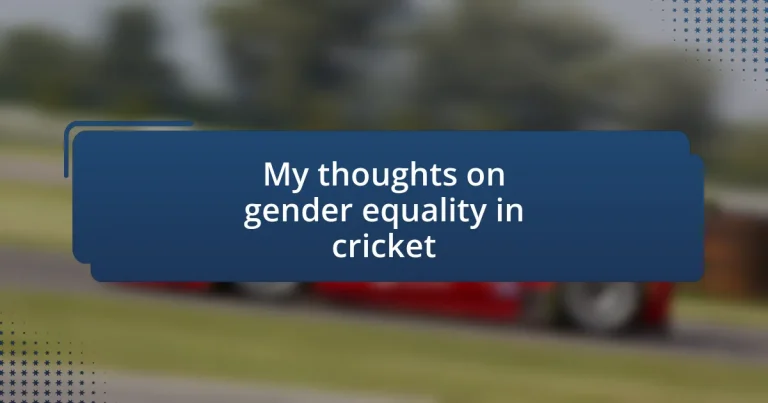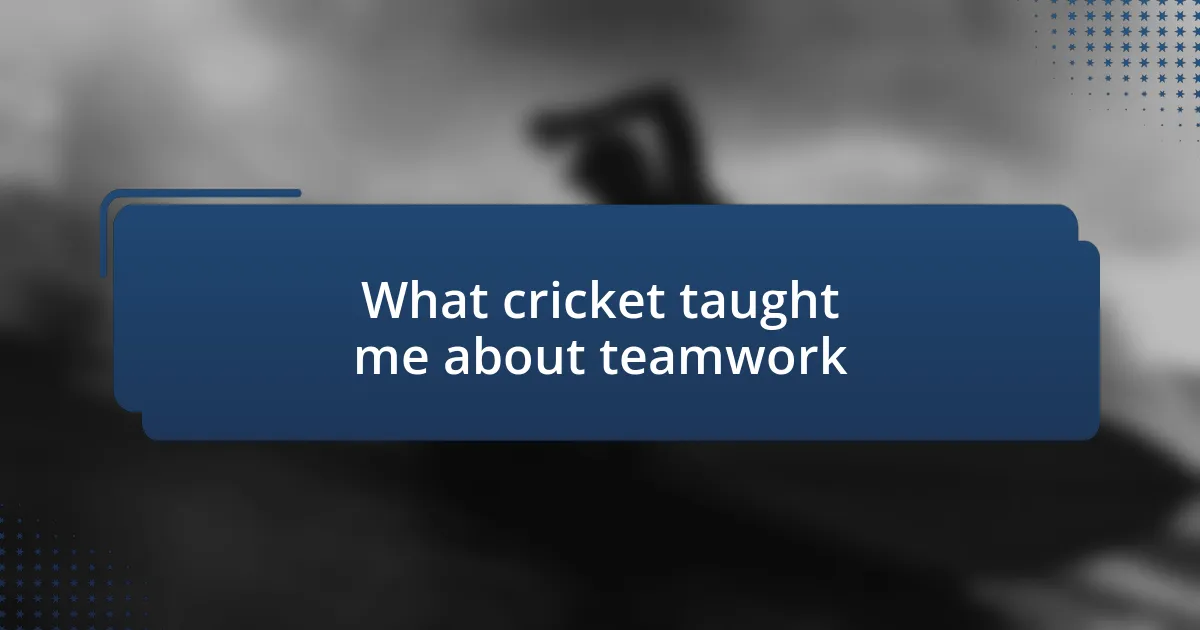Key takeaways:
- Gender inequality in cricket is highlighted by significant pay disparities and lack of recognition for female athletes compared to their male counterparts.
- The barriers faced by female cricketers include insufficient support, limited resources, sponsorship challenges, and cultural biases that discourage participation.
- Grassroots initiatives, increased sponsorship, and better media coverage are essential for promoting gender equality in cricket.
- Future prospects for women’s cricket include greater visibility, the establishment of professional leagues, and partnerships with educational institutions to inspire young girls.
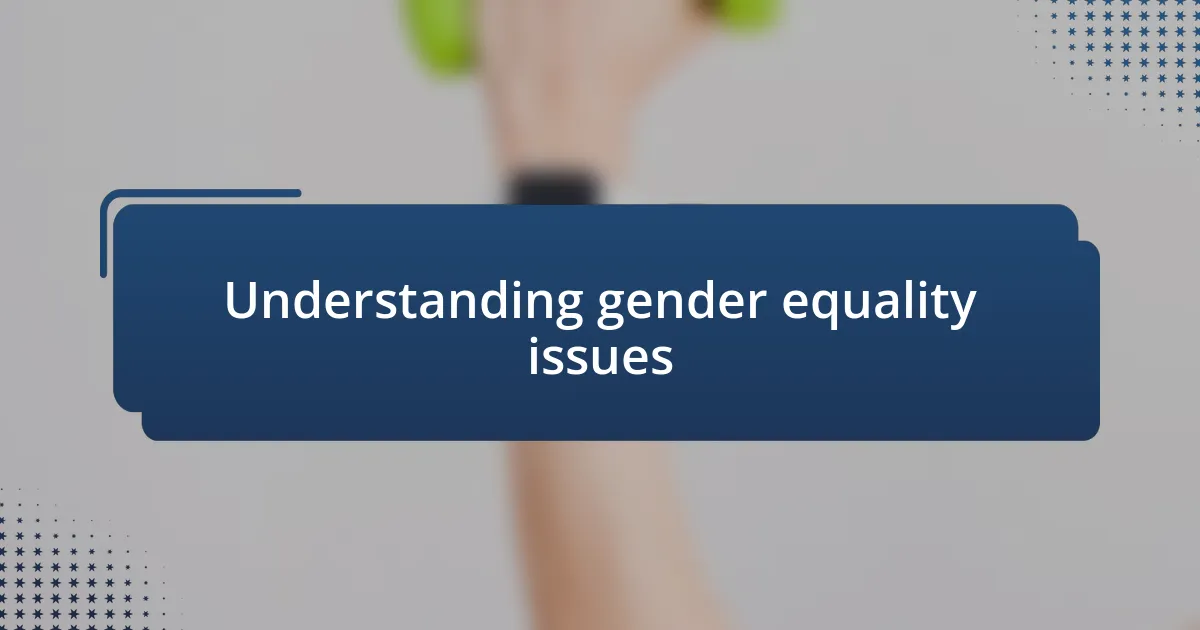
Understanding gender equality issues
Gender equality in cricket is a complex issue that transcends mere statistics. Sometimes, when I watch a women’s match, I feel a mix of pride and frustration. The athletes showcase incredible talent, yet the recognition and support they receive often fall short of what their male counterparts enjoy. Why is it that skill and dedication aren’t enough to level the playing field?
The pay disparity in cricket illuminates a harsh reality: women athletes frequently earn a fraction of what men do, despite putting in the same effort and time. I remember when I read about a female cricketer who had to take on a second job to sustain her career. It hits close to home because it raises the question: how can we expect women to thrive in a sport that doesn’t adequately value their contributions?
Moreover, representation matters. Seeing more women in leadership roles within cricket organizations can inspire young girls to pursue the sport. I think back to my childhood, where my role models were predominantly male athletes. What if I had seen powerful women in these positions? Such representation can instill confidence and create a more welcoming environment for future generations.
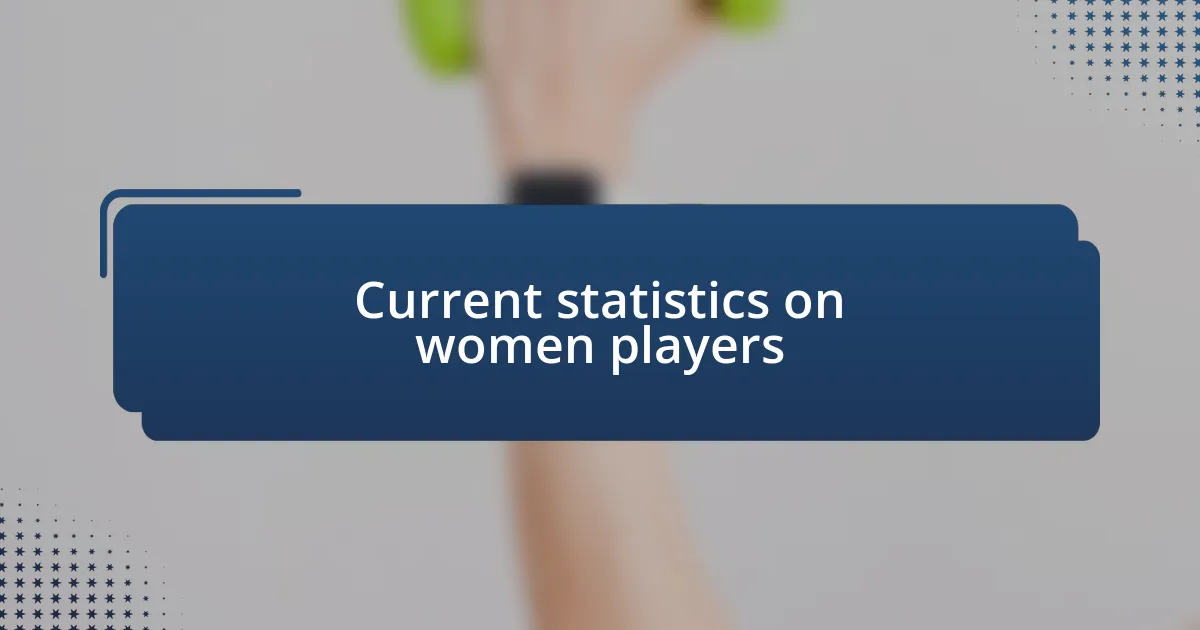
Current statistics on women players
Current statistics reveal a striking picture of women’s cricket, highlighting both progress and ongoing challenges. It’s encouraging to see the increase in women’s participation, yet the numbers often overshadow the disparities that still exist. For instance, in 2021, around 40 percent of players in recognized national teams were women, which is a remarkable improvement from previous years. However, this increase is sometimes tainted by the recognition and funding they receive, which still lags far behind men’s cricket.
Here are some key statistics that underline this situation:
- According to the ICC, the global total of women cricketers has reached approximately 105,000, showcasing growth in grassroots participation.
- Women’s cricket has seen a 20 percent increase in viewership over the past two years, yet broadcasting schedules often favor men’s matches.
- The prize money for the 2022 Women’s World Cup was $1.5 million compared to $10 million for the Men’s World Cup, underscoring the financial inequities.
- Only about 10 percent of cricket coaches and officials in many regions are women, highlighting an urgent need for more female representation in leadership roles.
I reflect on a moment during a women’s tournament when a young girl sitting next to me was thrilled to see her heroes in action. It reminded me of the power of visibility in sports. Watching those matches, you could feel the excitement in the air, yet it also made me acutely aware that the journey toward equality is still ongoing. The statistics tell a story, but the true impact is seen in the eyes of aspiring female cricketers, eager to step onto the field.

Barriers faced by female cricketers
The barriers faced by female cricketers are deeply rooted and multifaceted. For instance, many women encounter a lack of support when pursuing cricket, particularly at grassroots levels where resources and facilities are often limited. I recall visiting a local cricket club where young boys had access to a well-maintained pitch, while the girls practiced on a makeshift field with uneven ground. This disparity in resources can discourage young talent from developing and continuing in the sport.
Sponsorship and media coverage represent significant hurdles for women in cricket. Despite the rising interest in women’s matches, mainstream media often overlooks these events in favor of men’s games. I remember attending a women’s T20 match, only to find sparse coverage and a small crowd. It struck me that without visibility, potential fans and future players miss out on the thrill and inspiration that these games can provide.
Moreover, the culture surrounding cricket often perpetuates gender biases that discourage female participation. I once spoke with a talented female cricketer who shared her struggles in being taken seriously within her community. She faced jokes and stereotypes that female cricketers were not as skilled, reflecting a broader societal notion that often undermines women’s sports. These attitudes create an uphill battle for women passionate about cricket, emphasizing the urgent need for transformation.
| Barrier | Description |
|---|---|
| Lack of Support | Limited resources and facilities for female cricketers at grassroots levels. |
| Sponsorship & Media Coverage | Insufficient exposure and sponsorship opportunities for women’s cricket matches. |
| Cultural Bias | Societal attitudes that undermine female participation in the sport. |

Opportunities for promoting equality
One promising opportunity for promoting gender equality in cricket lies in grassroots initiatives that focus on female participation. I vividly remember a community workshop where young girls were introduced to cricket by female coaches. Watching their excitement as they learned the game made me realize how crucial it is to provide role models who can inspire the next generation. What if every girl had access to similar programs? It could change the narrative entirely.
Sponsorship can also catalyze change, as brands increasingly recognize the potential in women’s cricket. I once attended a panel where corporate sponsors shared their intention to invest more in women’s sports. Their enthusiasm highlighted a growing awareness that diverse representation in advertising can resonate with broader audiences. Isn’t it refreshing to think that companies are beginning to see the value of supporting female athletes?
Media coverage represents another powerful avenue for fostering equality. I recall being part of a discussion with journalists who expressed a desire to cover women’s cricket more extensively but felt limited by resources. What if these journalists were given the tools and encouragement to spotlight female matches? Increased visibility could ignite interest and support, creating a virtuous cycle that benefits the sport as a whole.
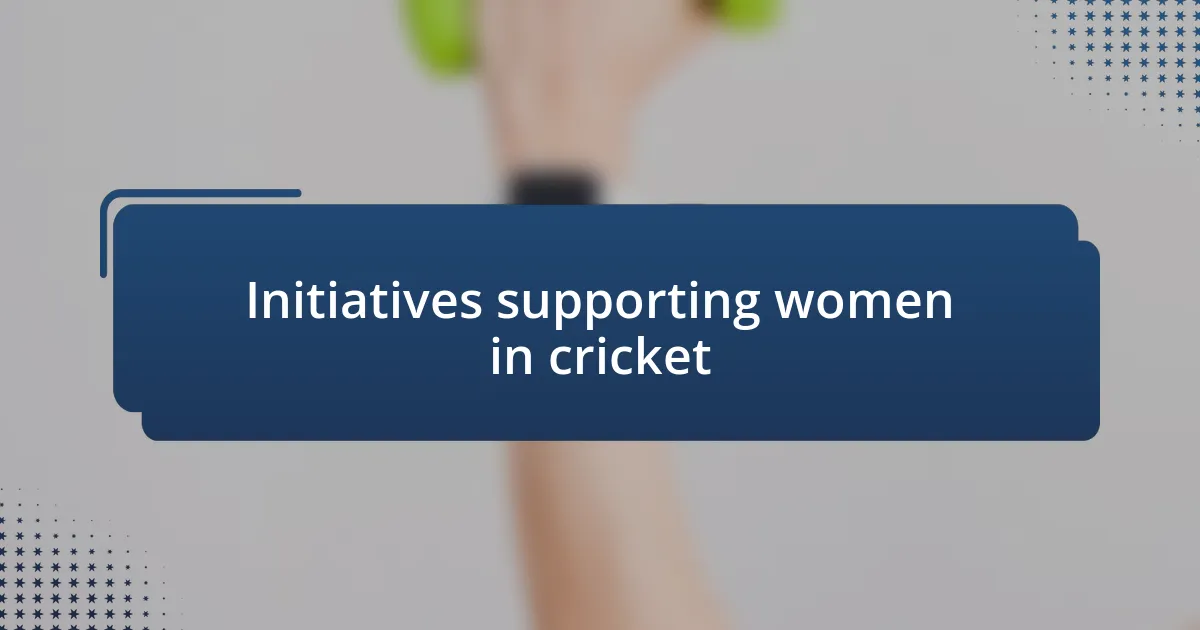
Initiatives supporting women in cricket
Several initiatives are making significant strides in supporting women in cricket. For example, I recently volunteered at a local women’s cricket club that launched a “Mentorship Program” connecting young female players with seasoned athletes. Seeing the mentees light up while hearing stories of triumph and challenges from their mentors reinforced my belief that such connections can empower young women to persist in their sporting aspirations. Why should this kind of support not be a standard practice across every club?
One noteworthy initiative that stands out to me is the “Women’s Super League,” which has provided a platform for female cricketers to showcase their talent on a larger stage. I remember watching a match where not only was the stadium filled with fans, but also the atmosphere was electric, with cheers resonating throughout. This felt like a milestone moment for the whole sport—what if we could build on that momentum to continue to create even more opportunities for women?
Additionally, educational programs specifically tailored for women in cricket are gaining traction. At a recent seminar I attended, experts discussed the importance of skills training, not just in playing cricket but also in areas like coaching and officiating. This holistic approach is crucial—why should any aspiring female cricketer feel limited in her career path? By equipping women with diverse skills, we not only empower individuals but enrich the sport itself, ensuring a future where women’s cricket thrives at every level.

Future prospects for gender equality
The future of gender equality in cricket is looking promising, especially with the increasing visibility and recognition of women’s contributions to the sport. I recall attending a women’s cricket tournament where the media coverage was just as robust as that for men’s matches. This shift in visibility not only elevates the players but also creates role models for young girls. How can we harness this momentum to inspire the next generation?
In my experience, partnerships between sporting organizations and educational institutions are crucial. When I visited a local school that integrated cricket into its physical education curriculum, I saw young girls eagerly participating in sessions led by female coaches. This approach not only promotes fitness but builds confidence—what if every school adopted such initiatives? It could reshape the landscape of cricket for women.
Moreover, the establishment of professional leagues for women can create sustainable career paths in cricket. I remember the excitement during the inaugural match of a newly formed women’s league, where players expressed feelings of validation and pride. Seeing their hard work rewarded on a professional level sends a powerful message: women belong in every aspect of cricket. Isn’t it time we recognize and invest in that potential fully?
